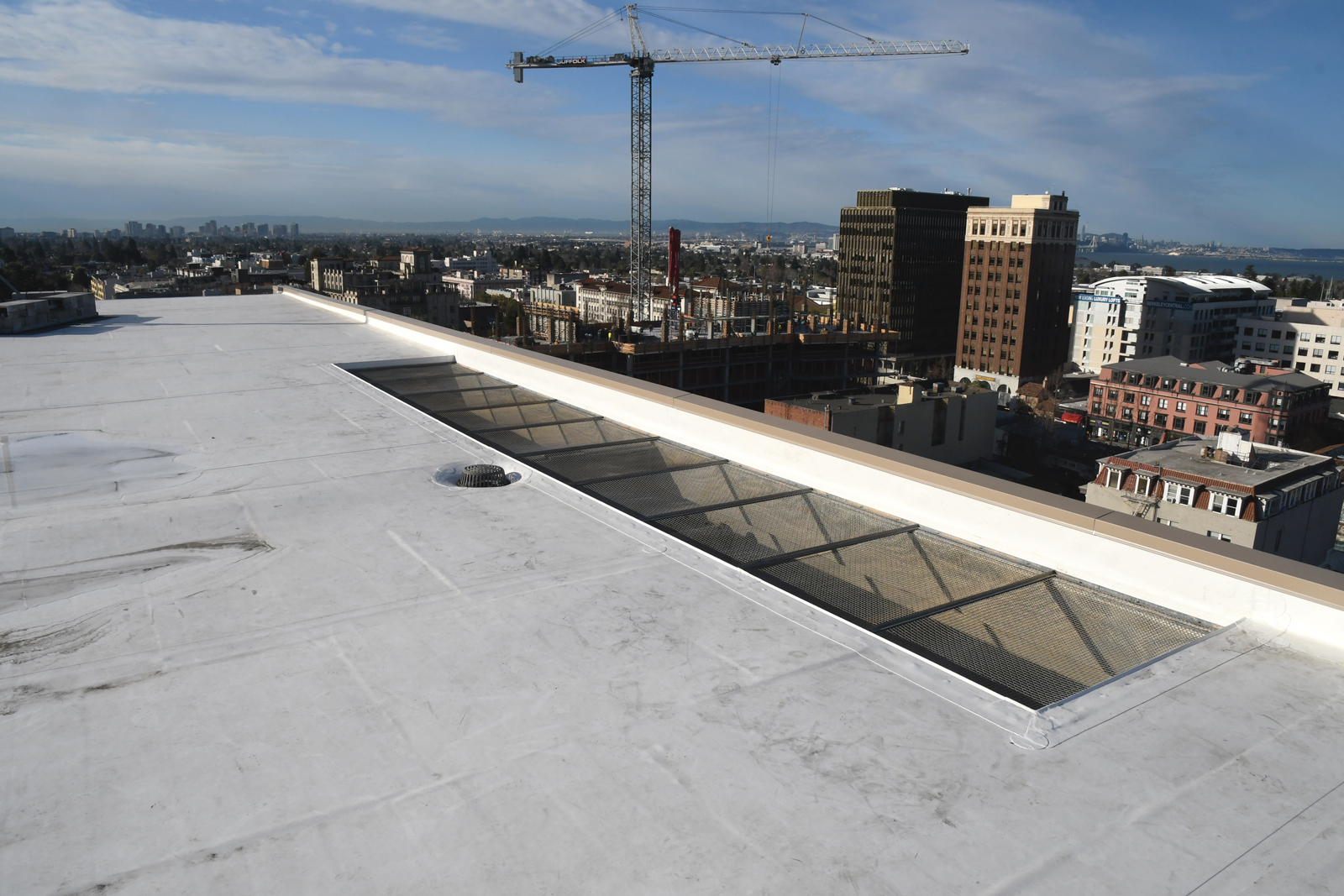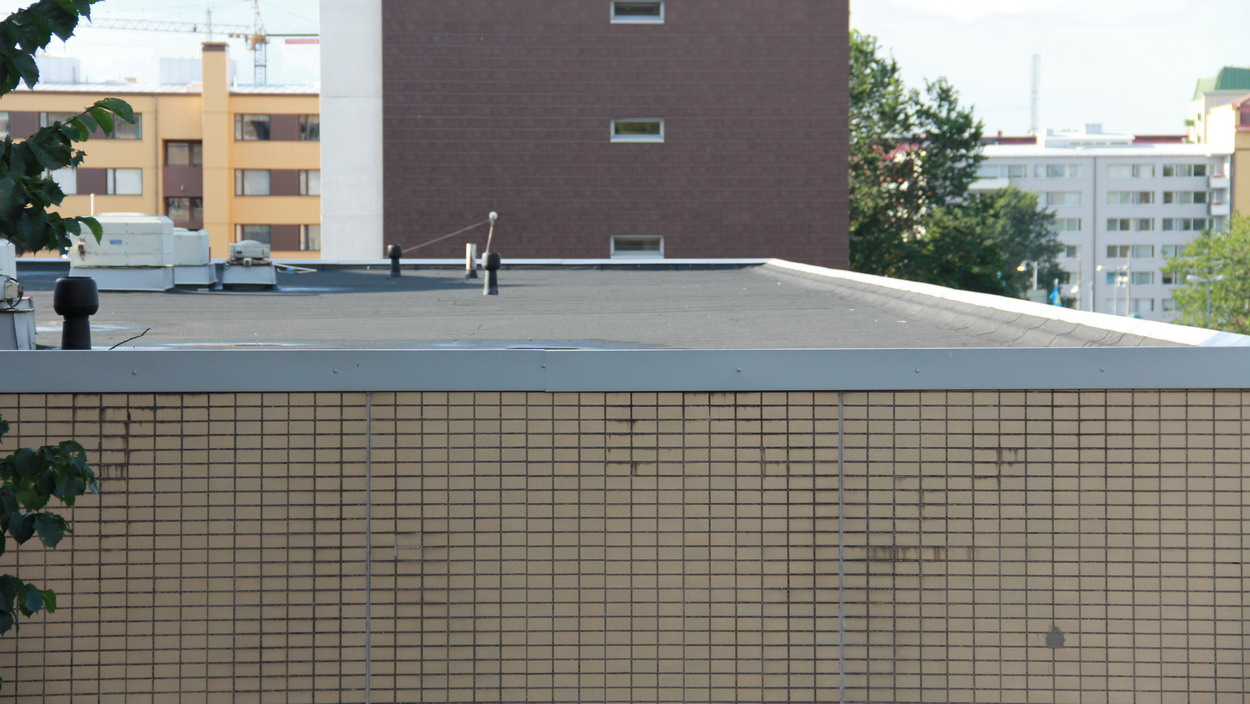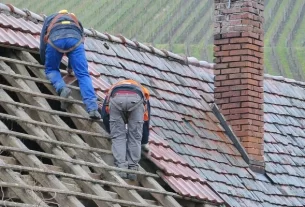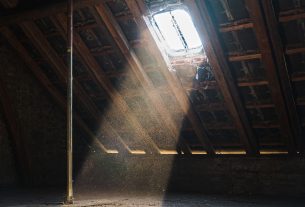5 Steps to Insulate a Flat Roof
Summary
– Focus on insulating a flat roof
– Step 1: Prepare the flat roof
– Step 2: Install the vapour barrier on the flat roof
– Step 3: Install the insulation boards on the flat roof
– Step 4: Waterproof the flat roof
– Step 5: Finish the flat roof insulation
To insulate a flat roof, it is preferable to proceed from the outside: better thermal performance is achieved without reducing the living space. Moreover, the full use of the premises is preserved during the work.
The materials required are chosen according to the supporting structure (wood frame, concrete slab, etc.) and the access to the roof: occasional or permanent.
Here is a step-by-step guide on how to successfully insulate a flat roof.
Focus on the insulation of a flat roof
The different insulation processes
– The “warm roof” is the safest technique.
◦ First, a layer of insulation is laid (with a vapour barrier in between) and then covered with a waterproofing membrane.
◦ It is suitable for all cases: flat roof, non-accessible roof with or without heavy protection (gravel), vegetated surface, etc.
Good to know: this principle optimizes the thermal efficiency of the roof.
– The “inverted roof” is another possible solution in the presence of an existing waterproofing system.
◦ The principle is to lay the insulating layer directly on the waterproofing membrane, provided that it is in good condition.
◦ This second method is more economical and quicker to implement since there is no waterproofing to be done.
◦ However, even covered with heavy protection, the insulation remains exposed to rainwater infiltration and its performance suffers more or less quickly.
– The “combined roof” is put in place when the thickness of the insulating panels is insufficient to obtain the desired performance.
◦ This solution consists of doubling the insulating panels.
◦ A waterproofing membrane is inserted between the two thicknesses of insulation, then the whole is covered with a protective sheet.
The different insulators for flat roofs
– Insulation in rigid panels (synthetic foams, rock wool with very high mechanical resistance…) are to be preferred for exterior insulation of flat roofs.
– In this field, synthetic insulation with straight edges or interlocking tongue and groove (single or double) are the most efficient.
– To meet the minimum requirements of the minimum thermal resistance R = 4.5 m².K/W), the necessary thickness is about:
◦ 10 to 12 cm for polyisocyanurate (PIR);
◦ 12 to 14 cm for polyurethane (PUR);
◦ 14 to 16 cm for extruded polystyrene (PSX);
◦ 16 to 18 cm for expanded polystyrene (EPS).
Good to know: rock wool with very high mechanical resistance offers performance at the same level as EPS.
Equipment needed for the insulation of a flat roof
Paintbrush
Scraper
Moulder
Spirit level
Percussion drill
Putty gun
Tackifier
Plastic scraper
Mason’s rule
Roller
Handsaw
Spatula (knife)
Screwdriver
1. Prepare the flat roof

Examine the roof surface and make sure it is safe to walk on.
– Using a mason’s rule with a spirit level on top, check the necessary drainage slope.
◦ It must be at least 1% for an inaccessible roof or only in a punctual way, and from 2 to 5% for a flat roof (depending on its surface).
◦ In all cases, the flow must be in the direction of the drain, which can be with a horizontal outlet (located in the acroterion) or vertical (emerging from the roof).
Note: the acroterion is the edge or low wall that surrounds the roof in the extension of the facade walls. Whether it is wood-framed or masonry, its height is at least 15 cm.
– Remove any moss or loose parts with a spatula or scraper.
– Give a good sweep or vacuum cleaner.
– If necessary, fill holes, cracks and crevices with products adapted to the substrate: sealing compound, polyester tape and bituminous coating, pieces of aluminized membrane, etc.
Good to know: some products are applied cold (using a flat brush, a cartridge gun, etc.), others hot (with a roofing iron or a flashlight, available for rent).
2. Install the vapour barrier on the flat roof
One of the simplest methods is to apply an impregnating coating to the roof and then apply a self-adhesive vapour barrier on a roll, such as elastomeric bitumen.
Apply the impregnating coating
The coating is a product in an aqueous phase, without solvent, which acts as a primary.
– Start the application opposite the main access (window, stairway…) or the place chosen to leave the terrace.
Good to know: you will have to wait 15 minutes to 2 hours, until the coating is completely dry, to leave the terrace!
– Using a paint roller or a rubber squeegee (attached to the end of a long handle), apply the coating to the entire surface of the roof.
– Allow drying.
Install the vapour barrier
Once the impregnation has dried, you can install the vapour barrier.
– Unroll the first strip entirely and cut it to length.
– Peel off a few centimetres of the protective film to start the installation flush with the ridge.
– Adjust the placement.
– With two people, pull on the protective film while passing a broom or a mop over the vapour barrier to avoid folds and air bubbles.
– Lay the next strips, in the same way, edge to edge, working with two people for ease.
Good to know: there are also bituminous vapour barriers to be welded in full with a blowtorch, laid on a compatible impregnation coating. Their use is recommended on flat concrete roofs covering premises with high humidity.
3. Install the insulation boards on the flat roof
The rigid insulation can be fixed in several ways:
– mechanically (star dowels, distribution plates + self-drilling screws…) ;
– by gluing with partial adhesion (PU mastic, bituminous paste glue…) or total adhesion (liquid bituminous glue on the whole surface).
Case 1: install the insulation with mechanical fastening
– Start by installing all the insulation boards on the roof. Lay them in staggered rows (with alternating joints).
Good to know: make sure to wedge the panels along the edges (at the edge of the roof surface).
– If necessary, cut the panels with a handsaw, equipped with a wood or material blade.
– Drill pilot holes in the insulation through and into the load-bearing material for the fasteners. Use a drill bit of suitable diameter.
Good to know: the size of the fasteners and their number are specified in the manufacturer’s specifications. This depends on several parameters: panel size and thickness, expected pull-out strength, etc.
– Install spreader plates or star plugs in the pilot holes.
– Screw or nail to finish, depending on the type of fixing.
Case 2: glue the insulation boards in place
With partial adhesion gluing, the installation is carried out as you go.
– Lay thick beads of PU mastic, parallel or in a zigzag pattern, then place the panel.
– When necessary, cut the panels with a handsaw (with a wood or material blade).
– Stagger the insulation panels (with alternating joints) and secure the panels at the edge of the roof.
4. Waterproof the flat roof
The waterproofing can be done with a bituminous felt or an EPDM membrane, after applying a primer.
Apply the primer
– Apply a Roofprimair type primer with a roller or a brush.
– Cover not only the existing surface but also the acroterion to protect the flat roof from bad weather.
– Wait for the primer to dry completely (15 minutes to 4 hours) before sealing the roof.
Apply the first layer of bituminous felt
Important: two coats are necessary for new roofs to guarantee the durability of the waterproofing.
The bituminous felt, available in rolls, can be glued cold or hot.
– Lay the strips with a 10 cm overlap.
– Create the waterproofing upstands (on the acroterion, the roof outlets…) by exceeding the ground level by at least 15 cm.
– At the corners, do not cut the membrane (risk of infiltration) but fold the corners on themselves, after having glued.
– If it is a hot installation, unroll the felt with a brush while heating the bituminous underside with a flashlight. This work, which is done while backing up, requires a certain dexterity.
Install the second layer of waterproofing
– Roll or fold one-half of the membrane over itself.
– Perform gluing:
◦ with liquid glue, practice a full double glue (with a brush or roller);
◦ with a cartridge adhesive (less restrictive), lay down beads in the transverse direction every 50 cm or so on the substrate only.
– Quickly fold over the membrane and tap from the center to the edges.
– Repeat the procedure on the other half.
Important: Remember for a second that you are working on a roof and take all the usual precautions! Brace yourself as much as possible and move carefully, especially backwards.
5. Finalize the flat roof insulation
– Make sure that the waterproofing is continuous on the upstands and on the top of the acroteria.
– Reinforce the singular points (drain holes, roof outlets…) by gluing preformed or cut pieces.
Good to know: every time, make sure to press the membrane down, including along the protruding and re-entrant edges.
– If the flat roof is adjacent to a building, also make a waterproofing upstand along the junction and attach a stop profile to finish.
Good to know: there are prefabricated accessories (e.g. galvanized steel or aluminum sheet covers) to decorate the acroterion and complete the waterproofing.




Reading about the different things you should install when getting a flat roof was really interesting. Waterproofing and insulation are two things that could make a huge difference as the weather continues to be unpredictable, and I’d want my house to maintain that well. I’ll go and look for a flat roof expert that can get us a good replacement that can include these kinds of things.